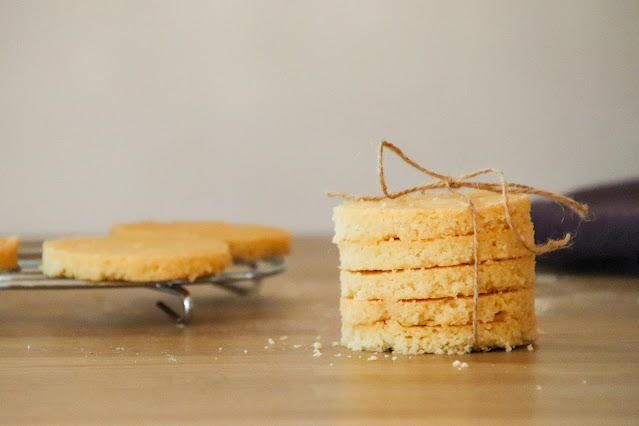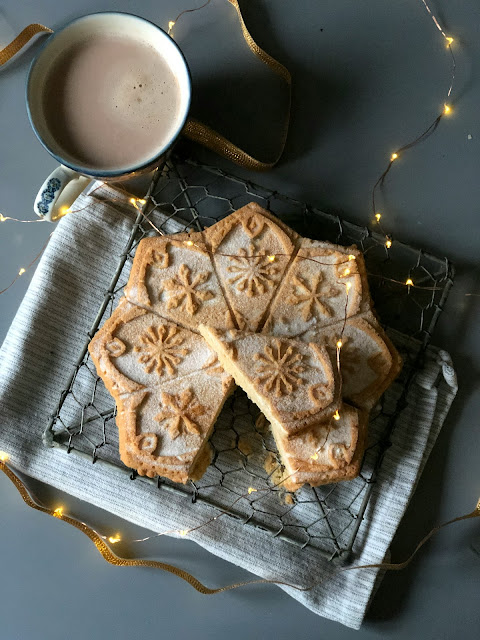Besides haggis, scotch, and tartans, nothing is more Scottish than shortbread. Gregor McCluskey, owner of BraeVal recalls the delicious shortbread made by his grandmother, a businesswoman, and a fine baker who lived in a wee Scottish village. Following an age-old Scottish tradition when the Queen turned 100, Nanna McCluskey whipped up a special batch of her best shortbread, one-hundred pieces to be exact, and had it shipped to the Queen. Today, her highly coveted recipe is still used by the McCluskey clan and served to their family, friends, and customers on special occasions.

This delicious buttery, crumbly cookie has a long history in Scotland where it originated in the 12th century.In medieval times, shortbread was a far cry from what we know as shortbread today. Originally it was a type of "bread biscuit" that was made from leftover bread dough that was twice baked and dried into a rusk which is a type of hard biscuit.
It wasn't until butter was added in the 16th century that Scottish shortbread was born. The use of butter made the pastry "short" or more crumbly which is how it got its name, which at the time was shortcake. To avoid paying taxes, in the 18th century, the name, Shortcakes was changed to Shortbread to keep it classified as bread, a non-luxury item that is not taxed. History repeated itself again in the 1980s when the European Union wanted to classify shortbread as a common biscuit to impose new taxes on it. The Scottish Bakers fought back declaring that shortbread is culturally significant and belongs to an ancestral line of "flour confectionery." Through their perseverance, shortbread is not taxed as a biscuit!

Most food historians attribute the rise in popularity of shortbread to Mary Queen of Scots in the 16th century. It is said that she was fond of Petticoat Tails, a buttery shortbread flavored with caraway seeds. At this time shortbread was reserved for the elite and only savored on special occasions.
There is some controversy regarding the name given to shortbread regarding its shape. Some food historians attribute the name, "petticoat tail" to the French, petite gatelles, or little cakes as Mary Queen of Scots brought in several French chefs that influenced the culinary scene. The Scots believe that their shortbread triangle biscuits were made in the shape of a circle to resemble a shape that resembled the fabric in a full-gored petticoat worn during the reign of Elizabeth I and Mary Queen of Scots. The theory is that the name for the biscuit comes from the word for this fabric pattern which is "tally", and so the biscuits were known as "petticoat tallis."
Whatever shape shortbread comes in, one large circle divided into segments (Petticoat Tails), round biscuits, or thick rectangular slabs cut into "fingers," it is scrumptious with a spot of tea or a tipple of scotch.
The first shortbread recipe appeared in 1736 from a Scotswoman called Mrs. McLintock and has grown in popularity around the world. In Scotland, shortbread still takes pride of place at special occasions like weddings, New Year, and Christmas. In Shetland, a new bride is welcomed into her new home by breaking a piece of shortbread over her head. The Scottish custom of eating shortbread at New Year has its origins in ancient pagan Yule Cakes that symbolized the sun and, today, a traditional New Year greeting if offered to "first footers."


